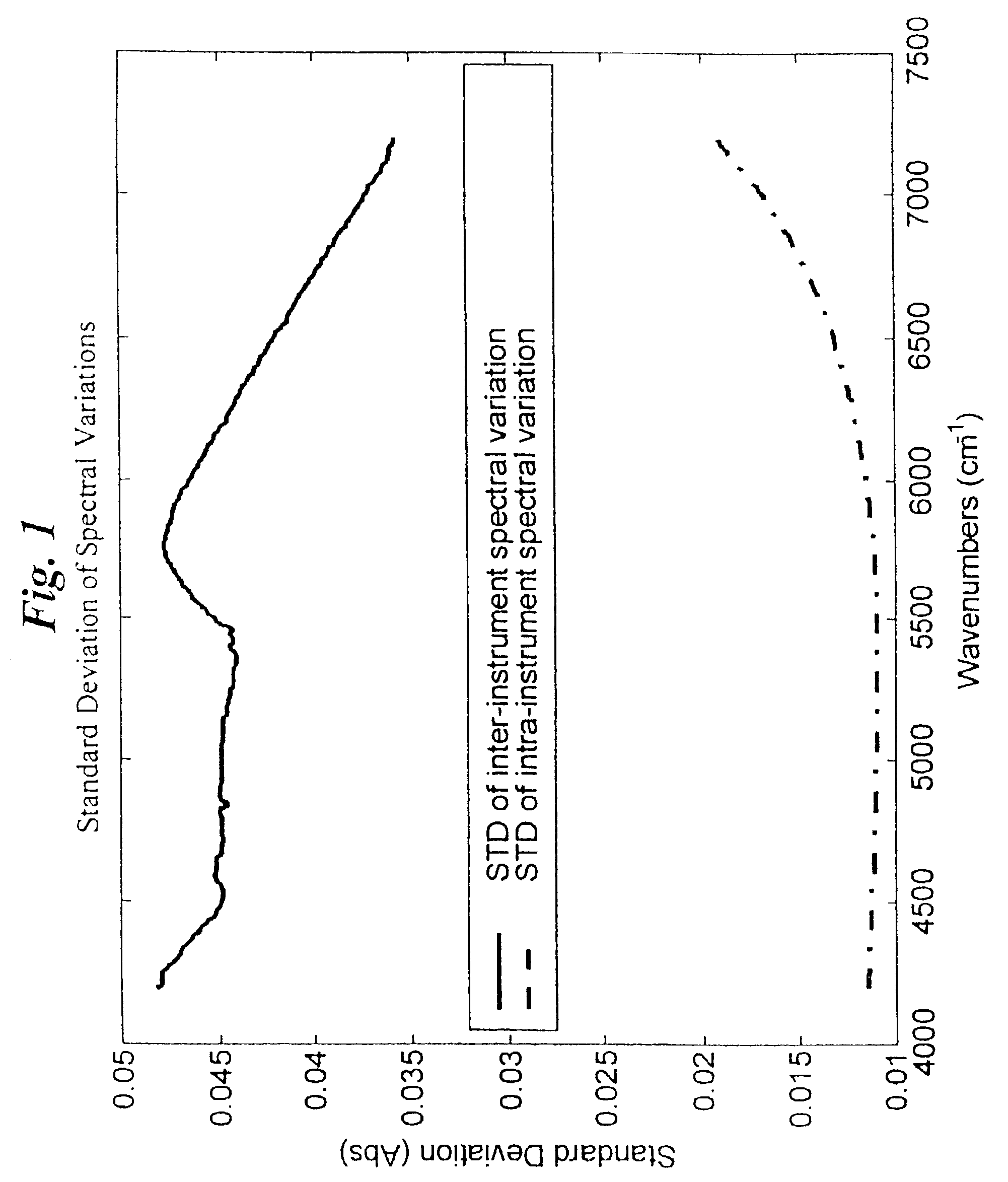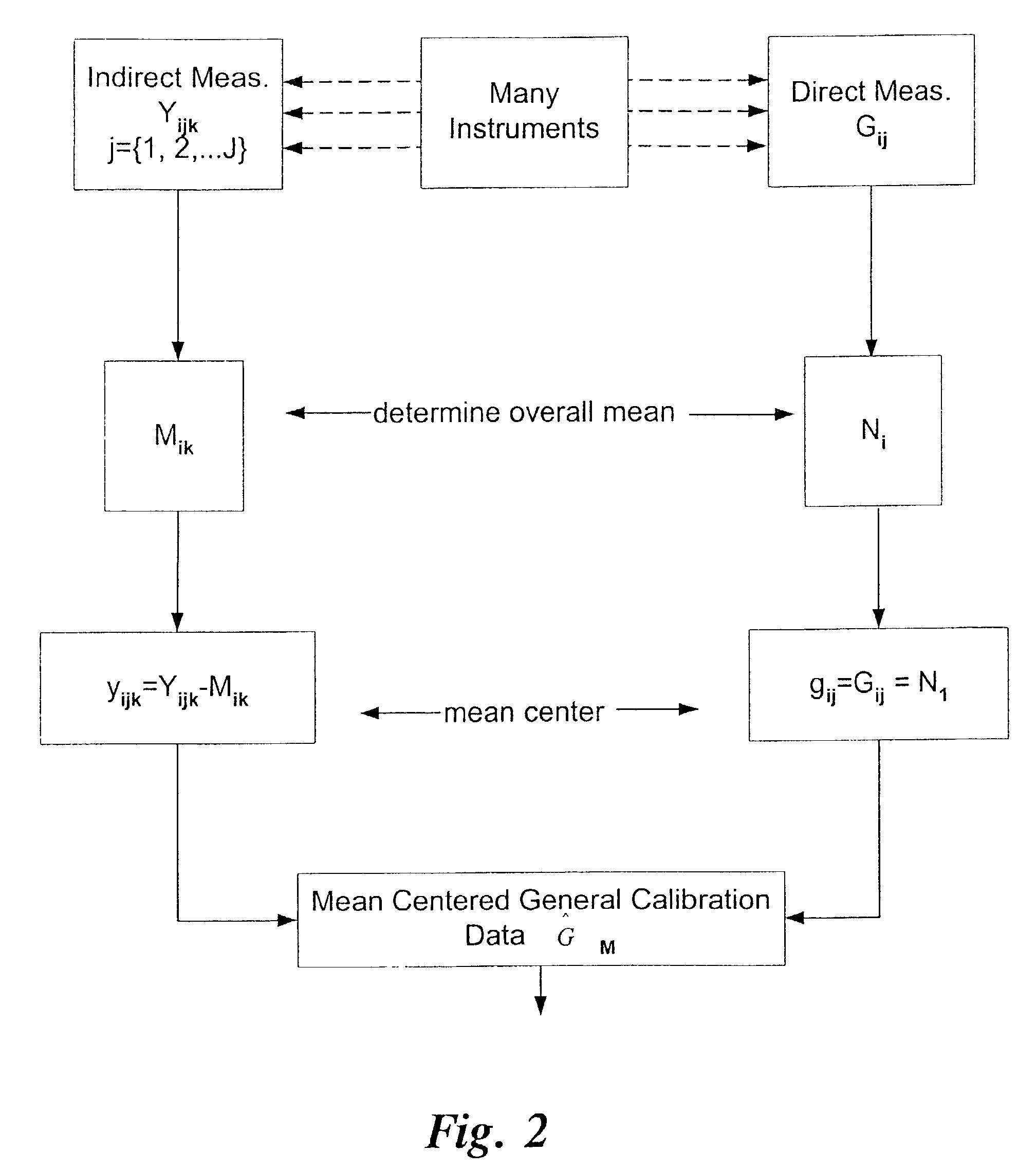Accommodating subject and instrument variations in spectroscopic determinations
- Summary
- Abstract
- Description
- Claims
- Application Information
AI Technical Summary
Benefits of technology
Problems solved by technology
Method used
Image
Examples
first embodiment
[0133]In summary, the proposed prediction method of this first embodiment provides a solution to the difficulties associated with building a universal master calibration model that needs to be appropriately responsive to instrument-to-instrument spectral variation as well as spectral variation within instruments over time and space. The proposed method is illustrated in the flow chart of FIG. 3 and provides a simple instrument-specific adaptation to a generic model that is appropriately sensitive to the spectral variation within a instrument. As described, this embodiment can be used to effectively reduce excess prediction errors components due to bias and slope. Development of this type of instrument-specific model is a substantial improvement (with respect to efficiency) when compared to the development of instrument-specific models via intensive optical sampling with each slave instrument.
[0134]The second prediction technique of the present invention is the composite technique th...
second embodiment
[0162]For the second embodiment, composite tailoring, the data were processed using the composite tailoring method described previously, and shown in FIG. 4. The generic calibration data from a master instrument in combination with an individual subject's tailoring spectra was used to develop the calibration model. The resulting tailored calibration model was developed using partial least squares regression and is specific for both the instrument and subject. The resulting instrument and subject specific model was used to predict on the subject's validation data. The process was repeated for all 11 patients individually. The results for the composite tailoring method for a single instrument are shown in FIG. 12. Again, the prediction results are quite similar to those generated by the control and effectively demonstrate the power of the technique.
[0163]As discussed herein, it is also possible to use multiple instruments to create a calibration and transfer this calibration to anothe...
PUM
 Login to View More
Login to View More Abstract
Description
Claims
Application Information
 Login to View More
Login to View More - R&D
- Intellectual Property
- Life Sciences
- Materials
- Tech Scout
- Unparalleled Data Quality
- Higher Quality Content
- 60% Fewer Hallucinations
Browse by: Latest US Patents, China's latest patents, Technical Efficacy Thesaurus, Application Domain, Technology Topic, Popular Technical Reports.
© 2025 PatSnap. All rights reserved.Legal|Privacy policy|Modern Slavery Act Transparency Statement|Sitemap|About US| Contact US: help@patsnap.com



